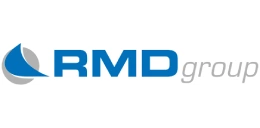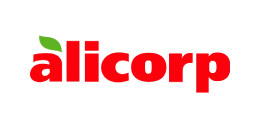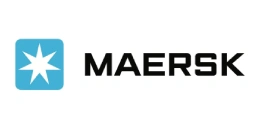Sodium Hydrosulfide Cost Model: From Inorganic Chemistry to Industrial Utility
_11zon.webp)
What is Sodium Hydrosulfide?
Sodium hydrosulfide (NaHS) is an inorganic chemical mainly known for its good reducing nature and adaptability in uses in industry. It exists as pale yellow solid or liquid in aqueous solution with the smell of sulfur. It is chemically obtained by the partial neutralization of hydrogen sulfide (H2S) by sodium hydroxide (NaOH) to form a stable and water-soluble salt.
Key Applications Across Industries:
The important characteristics of sodium hydrosulfide are good water solubility, high alkalinity, and being a sulfide donor as well as a reducing agent. These features render it extremely useful in mining applications (copper ore flotation), the leather industry (depilatory), the pulp and paper industry (pulping agent), and dyes, textile, and chemical intermediate production. It is also applied in heavy metal precipitation during wastewater treatment. The strengths of sodium hydrosulfide include its efficacy, compared to relatively low cost, as well as its availability in solid or liquid form to accommodate various industries. It is also economically viable in supporting resource efficiency by allowing for selective recovery of minerals as well as waste treatment. In the future, its sustainability and application in closed-loop chemical processing make sodium hydrosulfide a persistent vital raw material in various manufacturing industries.
What the Expert Says: Market Overview & Growth Drivers
The global sodium hydrosulfide market size reached USD 580.5 Million in 2024. According to IMARC Group, the market is projected to reach USD 920.3 Million by 2033, at a projected CAGR of 5.1% during 2025-2033. here are several driving demand factors for the market of sodium hydrosulfide.
The largest is the mining sector where NaHS plays a crucial role in the flotation of molybdenum and copper ores. The leather market is another excellent market driver, employing NaHS in dehairing hides because of its effectiveness over conventional lime-sulfide processes. In the pulp and paper industry, it is used in kraft pulping and chemical recovery to boost production effectiveness. The wastewater treatment facilities also depend on sodium hydrosulfide to eliminate heavy metals like mercury and cadmium. In the next five years, demand is also going to be driven by sustainability trends such as closed-loop chemical systems and more rigorous environmental laws encouraging safer handling of chemicals. The technological trends involve the optimization of manufacturing routes to keep H2S emissions to a minimum and the trend towards the use of liquid NaHS for convenience. Competitive strengths are low-cost production and broad industrial usage, but risks revolve around price instability of raw materials (NaOH and H2S) and regulatory pressure on storage of harmful chemical. From a sustainability perspective, NaHS facilitates effective treatment of waste, minimizing toxic burden in effluent. Industry reaction is investing in safer packaging, transport options, and mechanization of handling to guarantee compliance and safety for workers.
Case Study on Cost Model of Sodium Hydrosulfide Manufacturing Plant:
Objective
One of our clients reached out to us to conduct a feasibility study for setting up a medium to large-scale sodium hydrosulfide manufacturing plant.
IMARC Approach: Comprehensive Financial Feasibility
We developed a comprehensive financial model for the setup and operation of a proposed sodium hydrosulfide manufacturing plant in Zambia. This plant is designed to produce 100 tons of sodium hydrosulfide per day.
Manufacturing Process: The production process of Sodium Hydrosulfide (NaSH) is through the reaction of hydrogen sulfide gas with sodium hydroxide under controlled conditions in the presence of water. The process starts when hydrogen sulfide gas is fed into a reactor where hydrogen sulfide gas reacts with a solution of sodium hydroxide in water to form sodium hydrosulfide. The reaction mixture is then passed into an absorption unit, where excess hydrogen sulfide is stripped out, leaving behind a NaSH pure solution. The leftover gases, referred to as tail gas, are vented or treated to reduce the impact on the environment. To be as efficient as possible, any unused NaSH is recovered in the recovery unit and recycled back into the process. The end product of NaSH is transferred to storage tanks, where it is kept under regulated conditions until delivery. This closed-loop system minimizes raw material loss, efficient recovery of by-products, and production of high-quality sodium hydrosulfide for industrial use in processes like pulp and paper processing, leather treatment, and chemical synthesis.
_11zon.webp)
Get a Tailored Feasibility Report for Your Project Request Sample
Mass Balance and Raw Material Required: The primary raw materials used in the hydrogen sulfide gas producing plant are hydrogen and sulphur. For a plant producing 1 ton of hydrogen sulfide gas, 0.06 ton of hydrogen, and 0.98 ton of sulphur are required.
The primary raw materials used in the sodium hydrosulfide producing plant are sodium hydroxide and hydrogen sulfide. For a plant producing 1 ton of sodium hydrosulfide, 0.72 ton of sodium hydroxide, and 0.61 ton of hydrogen sulfide gas are required.
Machineries Required:
- H2S Gas Handling and Supply System
- Degassing Vessel
- Weighing/Dosing System
- NaOH Flake Dissolver Tank
- Gas Flow Meter & Control Valves
- Gas Absorption Column
- Feed Pumps
- Tail Gas Scrubber
- Vent Stack with Flame Arrestor
- H2S Gas Detector & Alarm System
- Recirculation Pumps
- NaHS Storage Tank
- Centrifugal Transfer Pump
- Crystallizer / Evaporator
- Flaker or Dryer
- Heat Exchangers and Cooling Systems
- Process Water System
- Pumps and Piping Network
- pH Meter
- Level Transmitters
- Filtration Unit
- Temperature & Pressure Gauges / Transmitters
- Safety and Pressure Relief Devices
- Flow Meters
- Packaging Machinery
- Water Treatment Plant
Techno-Commercial Parameter:
- Capital Investment (CapEx): Capital expenditure (CapEx) in a manufacturing plant includes various investments essential for its setup and long-term operations. It covers machinery and equipment costs, including procurement, installation, and commissioning. Civil works expenses involve land development, factory construction, and infrastructure setup. Utilities such as power, water supply, and HVAC systems are also significant. Additionally, material handling systems, automation, environmental compliance, and safety measures are key components. Other expenditures include IT infrastructure, security systems, and office essentials, ensuring operational efficiency and business growth.
- Operating Expenditure (OpEx): Operating expenditure is the cost incurred to operate a manufacturing plant effectively. Opex in a manufacturing plant typically includes the cost of raw materials, utilities, depreciation, taxes, packing cost, transportation cost, and repairs and maintenance. The operating expenses are part of the cost structure of a manufacturing plant and have a significant effect on profitability and efficiency. Effective control of these costs is necessary for maintaining competitiveness and growth.
.webp)
- Profitability Analysis Year on Year Basis: The proposed sodium hydrosulfide plant, with a capacity of 100 tons of sodium hydrosulfide per day, achieved an impressive revenue of US$ 24.9 million in its first year. We assisted our client in developing a detailed cost model, which projects steady growth, with revenue rising throughout the projected period. Moreover, gross profit margins improve from 11.1% to 13.1% by year 5, and net profit rises from a negative of 2.9% to a positive of 3.9%, highlighting strong financial viability and profitability.
.webp)
Conclusion & IMARC's Impact:
Our financial model for the sodium hydrosulfide manufacturing plant was meticulously developed to meet the client’s objectives, providing an in-depth analysis of production costs, including raw materials, manufacturing, capital expenditure, and operational expenses. By addressing the specific requirements of producing 100 tons of sodium hydrosulfide per day, we successfully identified key cost drivers and projected profitability, considering market trends, inflation, and potential fluctuations in raw material prices. This comprehensive financial model equipped the client with valuable insights into strategic decision-making, demonstrating our commitment to delivering high-quality, client-focused solutions that ensure the long-term success of large-scale manufacturing ventures.
Latest News and Developments:
- In June 2025, Silox India, the Indian arm of the Silox Group, a Belgian company, has acquired 35 acres of industrial land at Arete Group's Payal Industrial Park (PIP) in Dahej for the construction of a state-of-the-art plant for the production of inorganic chemicals.
- In April 2025, China's State Administration for Market Regulation released the General Code for Standardised Safe Production in Hazardous Chemical Enterprises (GB 45673-2025). This new required national standard will go into effect on November 1, 2025.
Why Choose IMARC:
IMARC's Financial Model Expertise: Helping Our Clients Explore Industry Economics
IMARC is a global market research company that offers a wide range of services, including market entry and expansion, market entry and opportunity assessment, competitive intelligence and benchmarking, procurement research, pricing and cost research, regulatory approvals and licensing, factory setup, factory auditing, company incorporation, incubation services, recruitment services, and marketing and sales.
Under our factory setup services, we assist our clients in exploring the feasibility of their plants by providing comprehensive financial modeling. Additionally, we offer end-to-end consultation for setting up a plant in India or abroad. Our financial modeling includes an analysis of capital expenditure (CapEx) required to establish the manufacturing facility, covering costs such as land acquisition, building infrastructure, purchasing high-tech production equipment, and installation. Furthermore, the layout and design of the factory significantly influence operational efficiency, energy consumption, and labor productivity, all of which impact long-term operational expenditure (OpEx). So, every parameter is covered in the analysis.
At IMARC, we leverage our comprehensive market research expertise to support companies in every aspect of their business journey, from market entry and expansion to operational efficiency and innovation. By integrating our factory setup services with our deep knowledge of industry dynamics, we empower our clients to not only establish manufacturing facilities but also strategically position themselves in highly competitive markets. Our financial modeling and end-to-end consultation services ensure that clients can explore the feasibility of their plant setups while also gaining insights into competitors' strategies, technological advancements, and regulatory landscapes. This holistic approach enables our clients to make informed decisions, optimize their operations, and align with sustainable practices, ultimately driving long-term success and growth.
Our Clients
Contact Us
Have a question or need assistance?
Please complete the form with your inquiry or reach out to us at
Phone Number
+91-120-433-0800+1-201-971-6302
+44-753-714-6104











